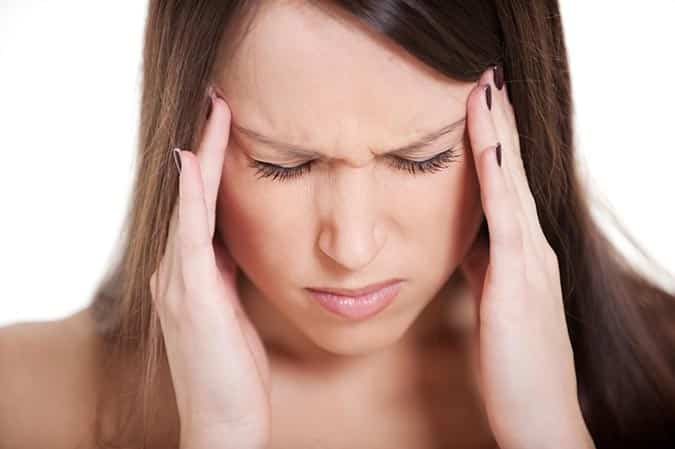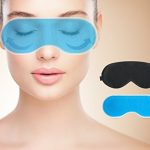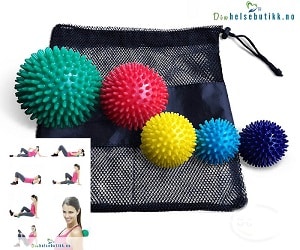

Vestibular Migraine
Many people who suffer from migraines may also experience dizziness or vertigo. If this happens regularly - then this is called vestibular migraine. The cause of vestibular migraine and its symptoms of dizziness are related to the inner ear, nerves and blood vessels - but one is not quite sure what causes it. In this article, we consider the symptoms of vestibular migraine, symptom relief and possible triggers for being affected. About 40% of those with migraine attacks have vestibular symptoms.
If you want to know more about migraines you can read extensively about this in this overview article below. This article, on the other hand, is dedicated to vestibular migraine.
Read more: - This You Should Know About Migraines
Migraines are characterized by unilateral intense headaches and varying symptoms.
Affected? Join the Facebook group «The Headache Network - Norway: Research, New Findings and Cohesion»For the latest updates on research and media writing about this disorder. Here, members can also get help and support - at all times of the day - through the exchange of their own experiences and advice.
How to relieve migraine?
Migrant attacks are terrible, so here's the thing to be a leader. There are medications that can stop an onset seizure and there are soothing medications along the way (preferably in the form of nasal spray, as there is otherwise a high chance of the person vomiting).
Other measures for faster relief of symptoms, we recommend that you go down a bit with a so-called "migraine mask»Over the eyes (mask that one has in the freezer and which is specially adapted to relieve migraines and headaches) - this will reduce some of the pain signals and calm some of your tension. Click on the image or link below to read more about it.
Read more: Pain Relieving Headache and Migraine Mask (Opens in new window)
What is vestibular migraine?
The vestibular system belonging to the inner ear and the brain consists of various sensory organs that control balance and body position perception. If these are affected, this will lead to incorrect information to the brain and consequent dizziness, vertigo, lethargy or a feeling of being unstable - these can again be aggravated by movement, as this leads to more information for the brain to handle and thus more misinterpretations.
Vestibular migraine is diagnosed if people suffering from migraines also have associated symptoms in the vestibular apparatus. These symptoms of dizziness are experienced together with the more characteristic migraine symptoms - that is, they do not rule out normal symptoms such as feeling nauseous, vomiting and intense one-sided headache.
Symptoms of vestibular migraine
Vestibular migraine affects the ability to balance - and often gives a feeling that the room is spinning, the ground is moving or a feeling that you are falling or unsteady. It can also affect the other senses, as well as hearing and sight.
Key symptoms that characterize vestibular migraine are dizziness, vertigo and balance problems - but symptoms can also include:
- Neck Pain
- Discomfort when moving - such as bending forward, turning your head or looking up
- Feeling pressure in the head or ear
- Ringing or wheezing in the ears - called tinnitus / tinnitus
- Temporary partial or total loss of vision
- Visual impairment - such as tingling in front of the eyes or blurred vision
The symptoms can vary in intensity and presentation - and can occur on their own or with headaches.
Rarer symptoms include:
- Problems talking
- Stabbing on the face, arms and shoulders
- Temporary weakness in one side of the body
If you experience any of these rarer symptoms, without having experienced them before, then you should contact an ambulance or doctor immediately so you can rule out undergoing a brain drop or stroke.
How long can a migraine attack last?
Without treatment, migraines and symptoms can last anywhere from 4 to 72 hours. The most common thing is that it is better within 24 hours.
Causes of migraine
Experts are not quite sure what causes migraines, but you know that it has a genetic factor and that it is hereditary. Even today one is unsure why some get migraines and others do not.
- Triggers
It is known that certain things can lead to or provoke migraine attacks - these are called "triggers". One person may have different triggers from another - so there is no universal code on what can be done to avoid such provocation. For example. then one person may experience a significant decrease in their migraine attacks by drinking less red wine - and another may experience improvement by eating more natural, less cooked foods without additives (such as monosodium glutamate).
Some have more triggers - and thus have a higher chance of provoking a migraine attack. Some of the most common triggers are:
- Stress
- Poor sleep hygiene
- Poor diet
- Red wine
- Change of daily routine
- Additives (eg monosodium glutamate / MSG)
- Strong smells
- Cheese
- Sjokolade
Other causes may be:
- Malfunction of the neck muscles (myalgia) and joints
- Head injuries and neck injuries, including whiplash / whiplash
- Jaw tension and bite failure
- drug Use
- Menstruation and other hormonal changes
- Inherited hypersensitivity to the nervous system
Treatment of migraines
Prevention: The best treatment for migraines is prevention - this involves identifying which lifestyle changes and factors are provoking your migraine attacks. Many people experience significant improvement by changing their diet and changing their activity level.
Medical treatment: We divide drug treatment into two categories;
- Medications that stop a migraine attack. For example. Imigran.
- Drugs that prevent a migraine attack.
For milder migraine attacks, it may be beneficial to, in combination with your GP, try out more common pain medication, as these have fewer side effects. If this does not work then prescription drugs may be needed.
Muscle Knut Treatment: Muscular therapy can reduce muscle tension and muscle pain.
needle treatment: Dry needling and intramuscular acupuncture can reduce muscle pain and relieve muscle problems, which may be a contributing factor to migraine problems.
Joint Treatment: An expert in muscles and joints (eg chiropractor or manual therapist) will work with both muscles and joints to give you functional improvement and symptom relief. This treatment will be adapted to each individual patient based on a thorough examination, which also takes into account the patient's overall health situation. The treatment will most likely consist of joint corrections, muscle work, ergonomic / posture counseling and other forms of treatment that are appropriate for the individual patient.
Chiropractic and manual treatment, consisting of customized neck mobilization / manipulation and muscle work techniques, has a clinically proven effect on the relief of headaches. A systematic review of studies, a meta-study (the strongest form of research), conducted by Bryans et al (2011), published as “Evidence-based guidelines for the chiropractic treatment of adults with headaches. ” concluded that neck manipulation has a soothing, positive effect on both migraine and cervicogenic headache - and should therefore be included in the standard guidelines for the relief of this type of headache.
Yoga and meditation: Yoga, mindfulness, breathing techniques and meditation can help lower the level of mental stress in the body. A good measure for those who stress too much in everyday life.
Prevention of vestibular migraine
As mentioned, so-called triggers and causes of migraine attacks can vary from person to person. But one thing that is important is mapping out what causes you migraines - and then working to avoid this. Some preventive advice and measures are also available:
- If you use painkillers regularly, consider stopping this for a few weeks. If you have a medication-induced headache, you will experience that you will get better over time
- Avoid dehydration and ingest fluid regularly throughout the day
- Stay in good physical shape
- Lie down and get up at regular times of the day
- Live healthy and exercise regularly
- Seek well-being and avoid stress in everyday life
Self-help: What can I do even against neck and shoulder pain?
1. General exercise, specific exercise, stretching and activity are recommended, but stay within the pain limit. Two walks a day of 20-40 minutes make good for the whole body and sore muscles.
2. Trigger point / massage balls we strongly recommend - they come in different sizes so you can hit well even on all parts of the body. There is no better self help than this! We recommend the following (click the image below) - which is a complete set of 5 trigger point / massage balls in different sizes:
3. Training: Specific training with training tricks of various opponents (such as this complete set of 6 knits of different resistance) can help you train strength and function. Knit training often involves more specific training, which in turn can lead to more effective injury prevention and pain reduction.
4. Pain Relief - Cooling: Biofreeze is a natural product that can relieve pain by cooling the area gently. Cooling is especially recommended when the pain is very severe. When they have calmed down then heat treatment is recommended - it is therefore advisable to have both cooling and heating available.
5. Pain Relief - Heating: Warming up tight muscles can increase blood circulation and reduce pain. We recommend the following reusable hot / cold gasket (click here to read more about it) - which can be used both for cooling (can be frozen) and for heating (can be heated in the microwave).
6. Prevention and healing: Compression noise like that like this can increase blood circulation to the affected area, thereby speeding up the natural healing of injured or worn muscles and tendons.
Recommended products for pain relief in pain
Biofreeze (Cold / cryotherapy) Read more about it by clicking on the image (opens in new window)
Also read: Jaw Headache - When the jaw hurts your head
Do you have questions about the article or do you need more tips? Ask us directly via our facebook page or via the comment box below.
NEXT PAGE: - This you should know about FIBROMYALGIA
 Follow Vondt.net on YOUTUBE
Follow Vondt.net on YOUTUBE
(Follow and comment if you want us to make a video with specific exercises or elaborations for exactly YOUR issues)
 Follow Vondt.net on FACEBOOK
Follow Vondt.net on FACEBOOK
(We try to respond to all messages and questions within 24-48 hours. We can also help you interpret MRI responses and the like.)









Leave a reply
Want to join the discussion?Feel free to Contribute!